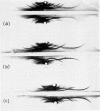Abstract
A girl is reported in whom abnormal susceptibility to infections in many sites, involving many types of bacteria and leading to fatal bronchopneumonia, was associated with normal levels of all immunoglobulins, but complete absence of isohaemagglutinins, and failure of antibody response to some bacterial antigens (Salmonella typhi O, Salmonella paratyphi B, O and H, and pertussis), possible delay in developing antibodies to streptococcal infection, but normal antibody production to other Salmonellae (O and H), staphylococci, diphtheria and tetanus toxoid. Histology of lymphoid tissues, and delayed type hypersensitivity and in vitro lymphocyte transformation were normal.
This suggestive evidence of partial antibody deficiency syndrome, with normal concentration of all immunoglobulins, is compared with Aldrich's syndrome, and discussed as a possible instance of partial defect of the final stages of antibody synthesis or release.
Full text
PDF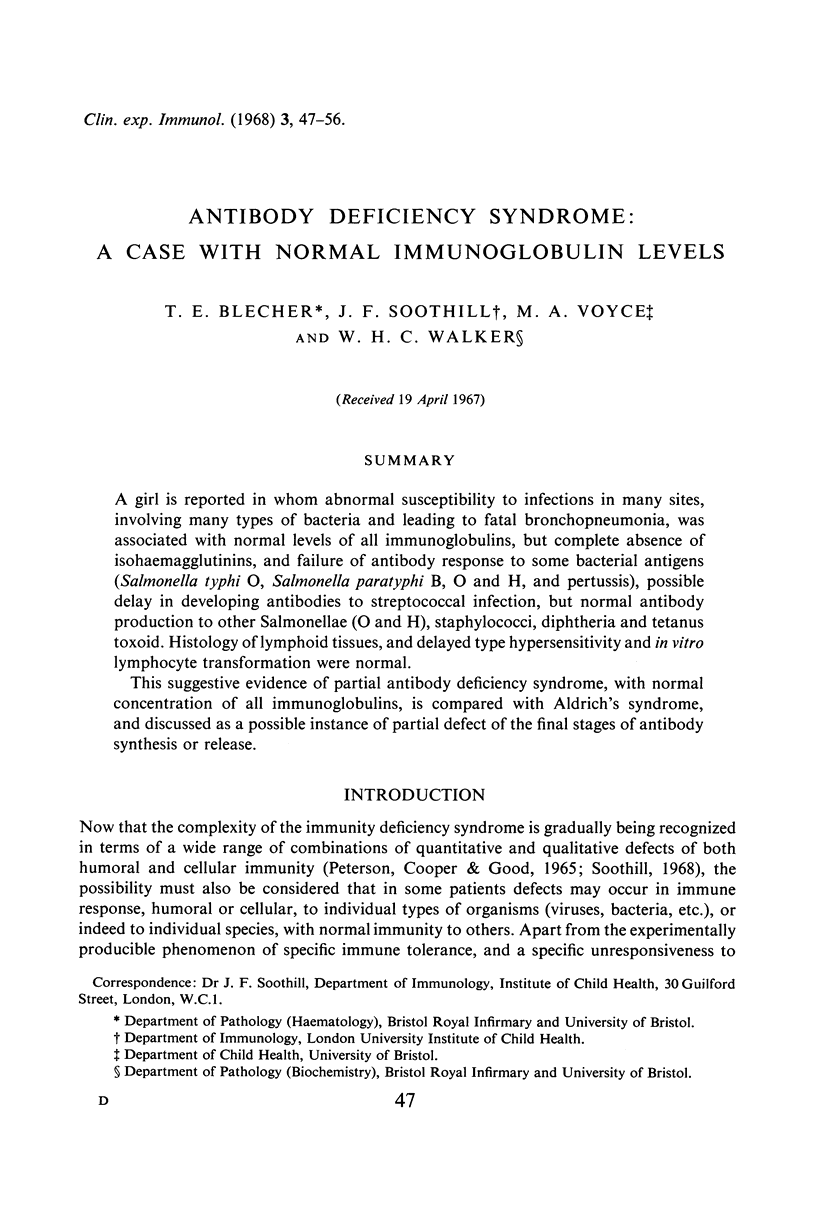
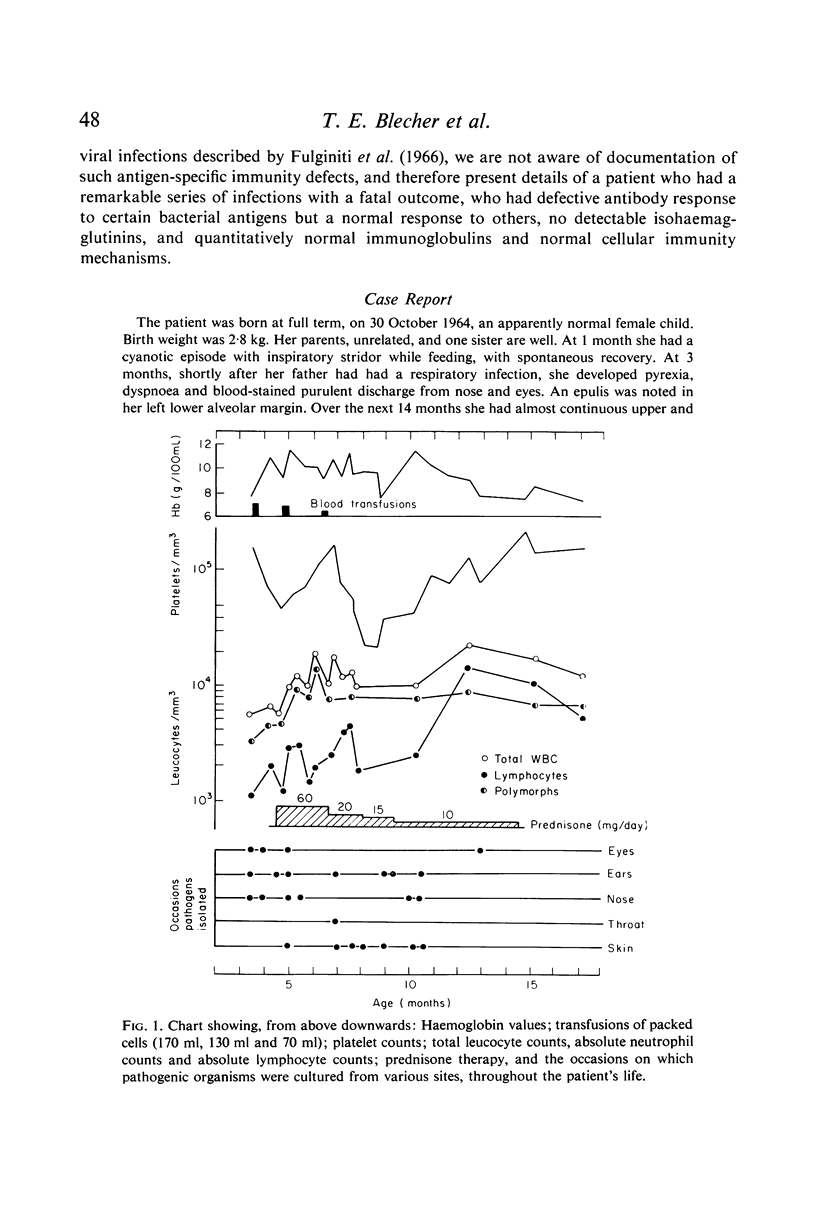
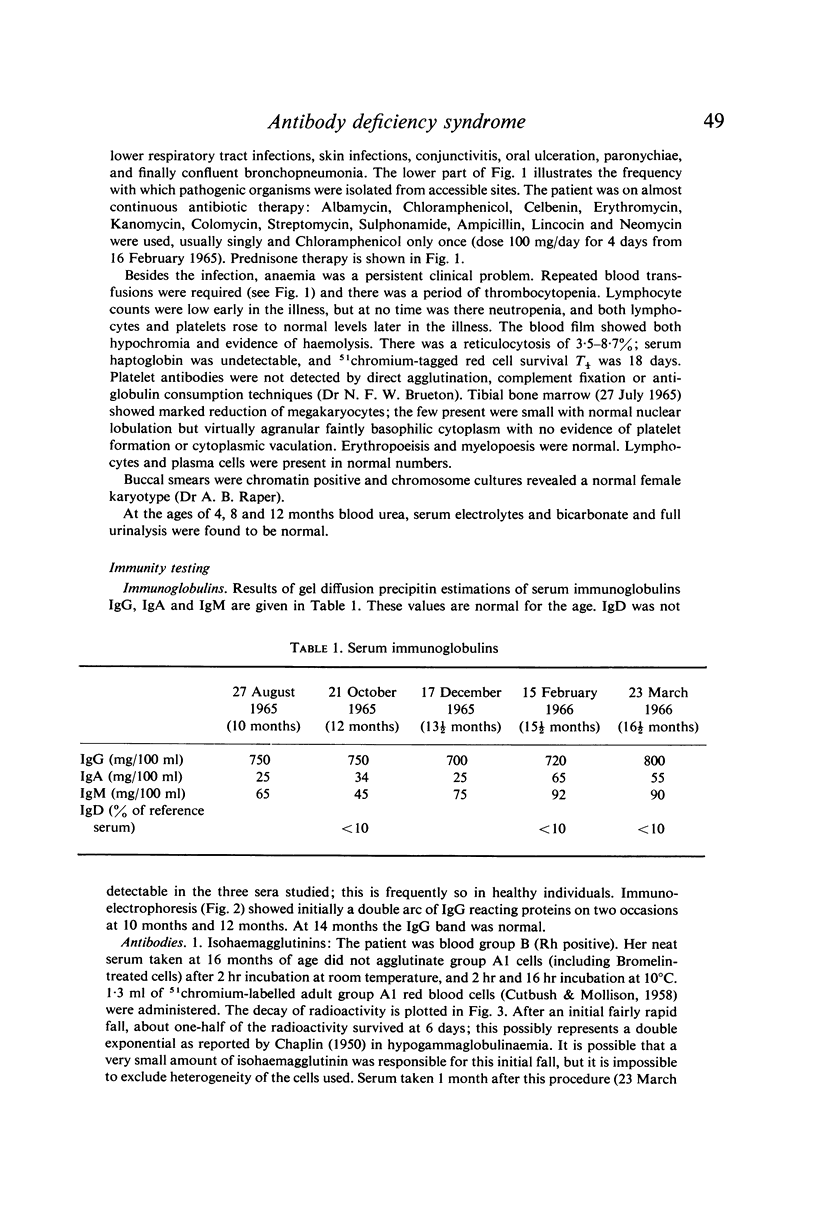
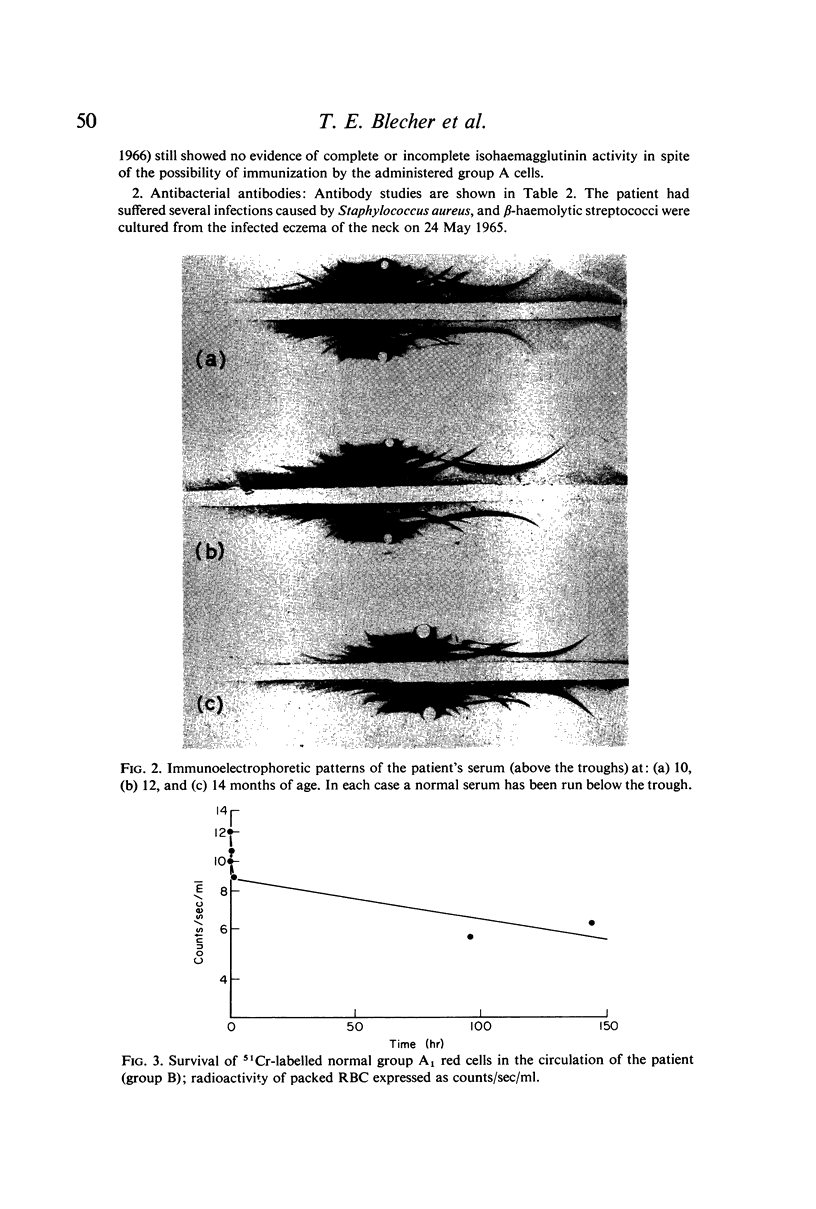
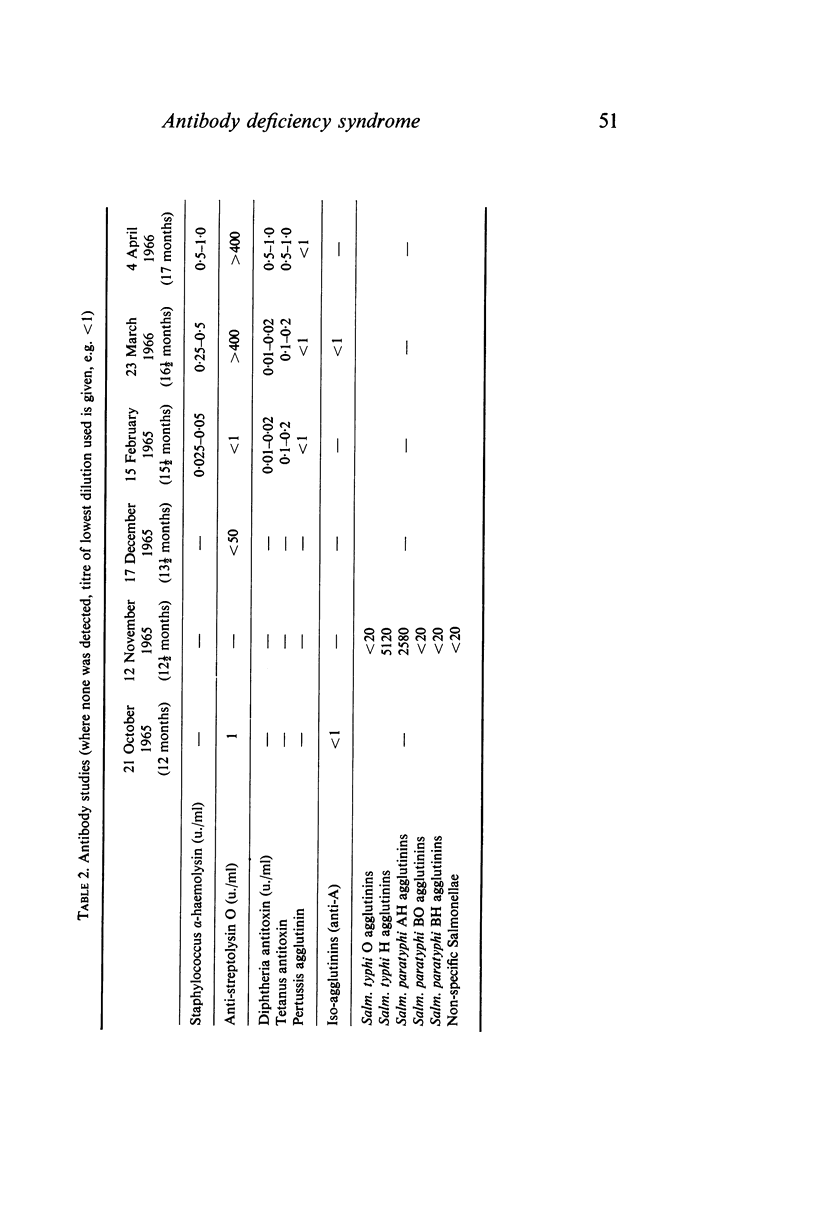
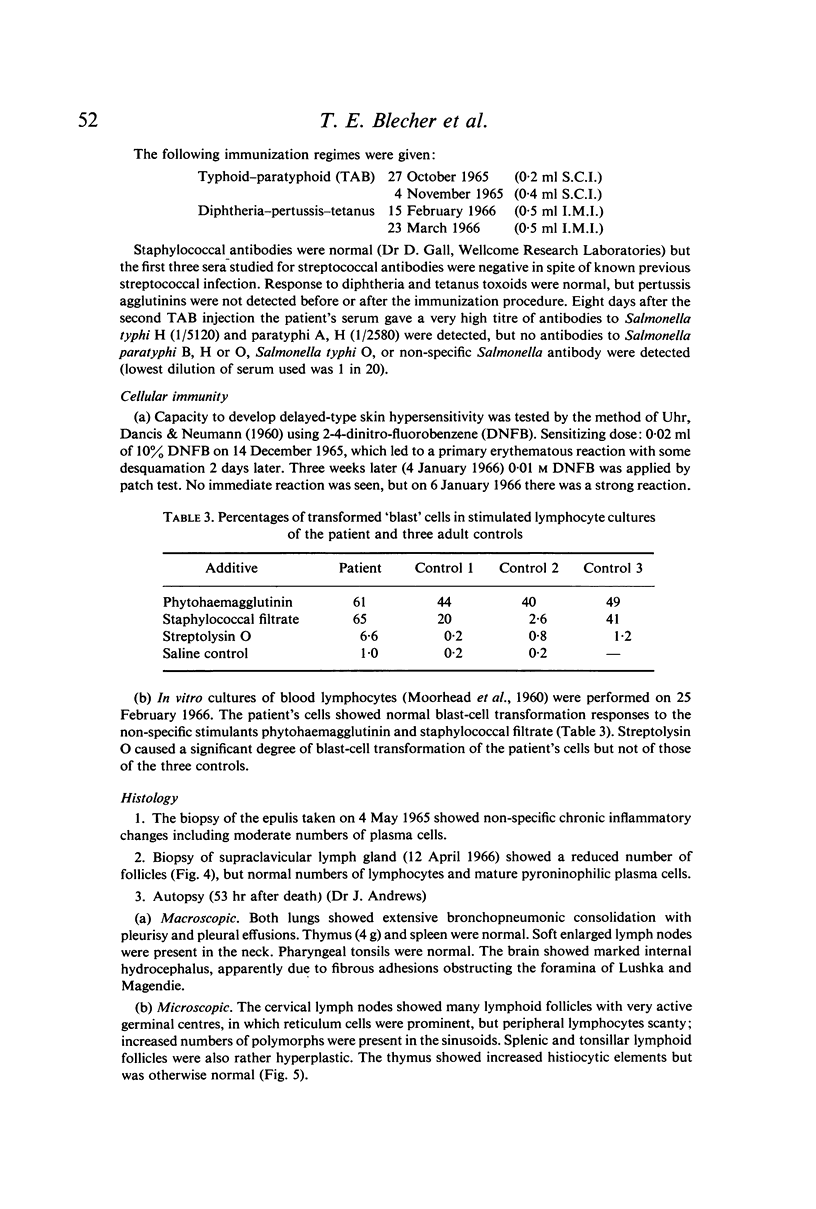
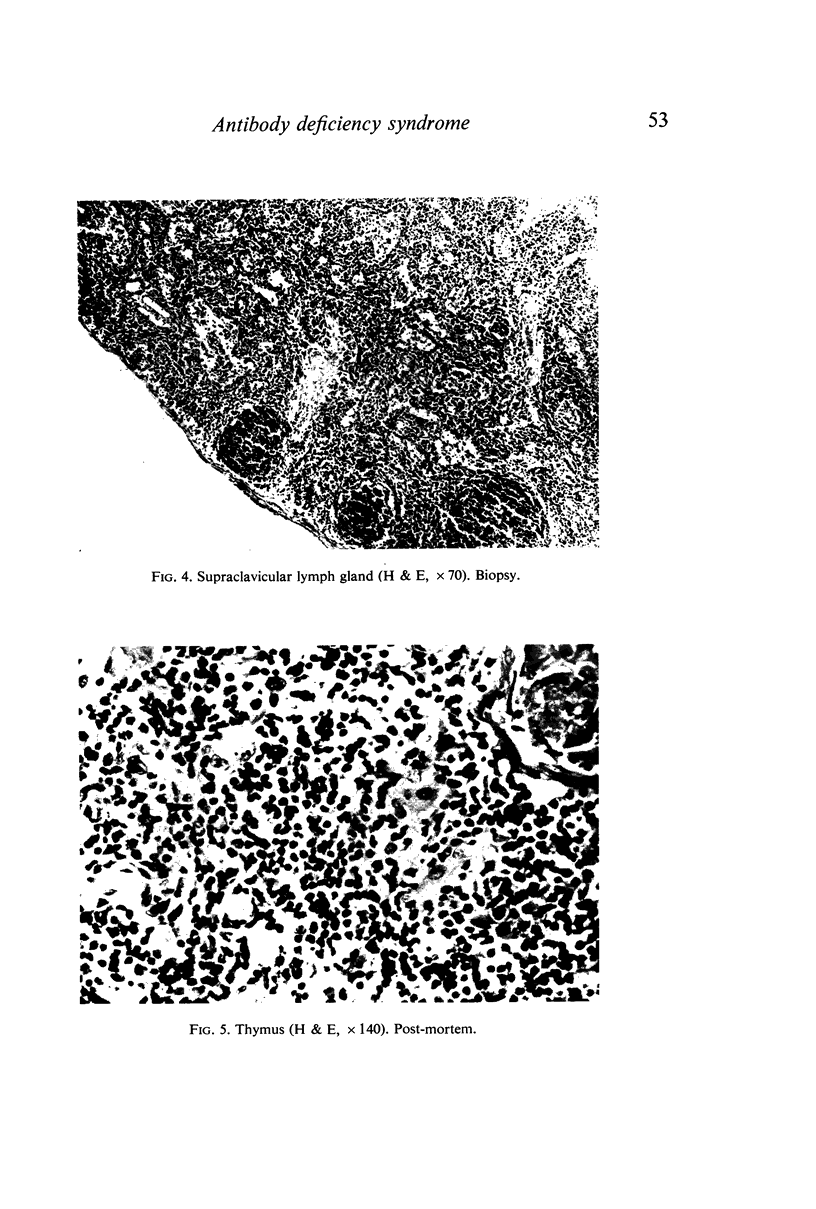
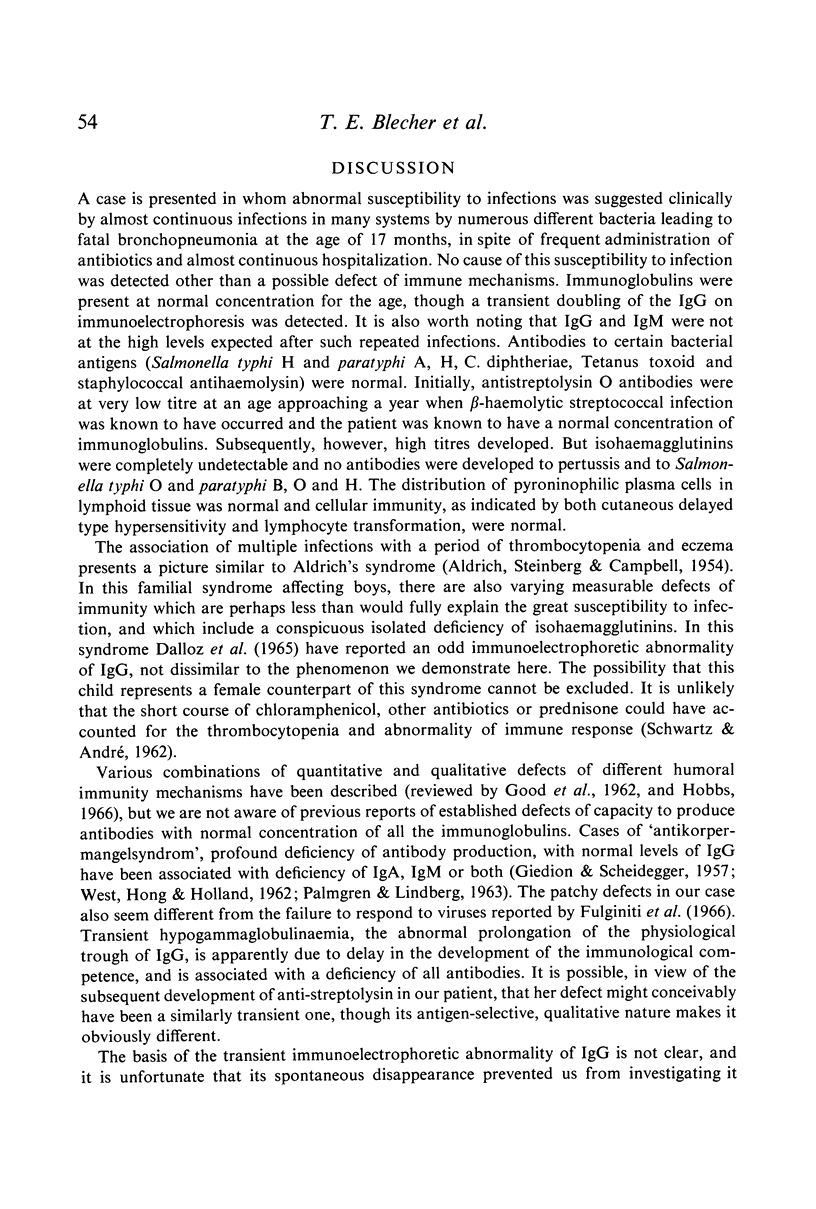
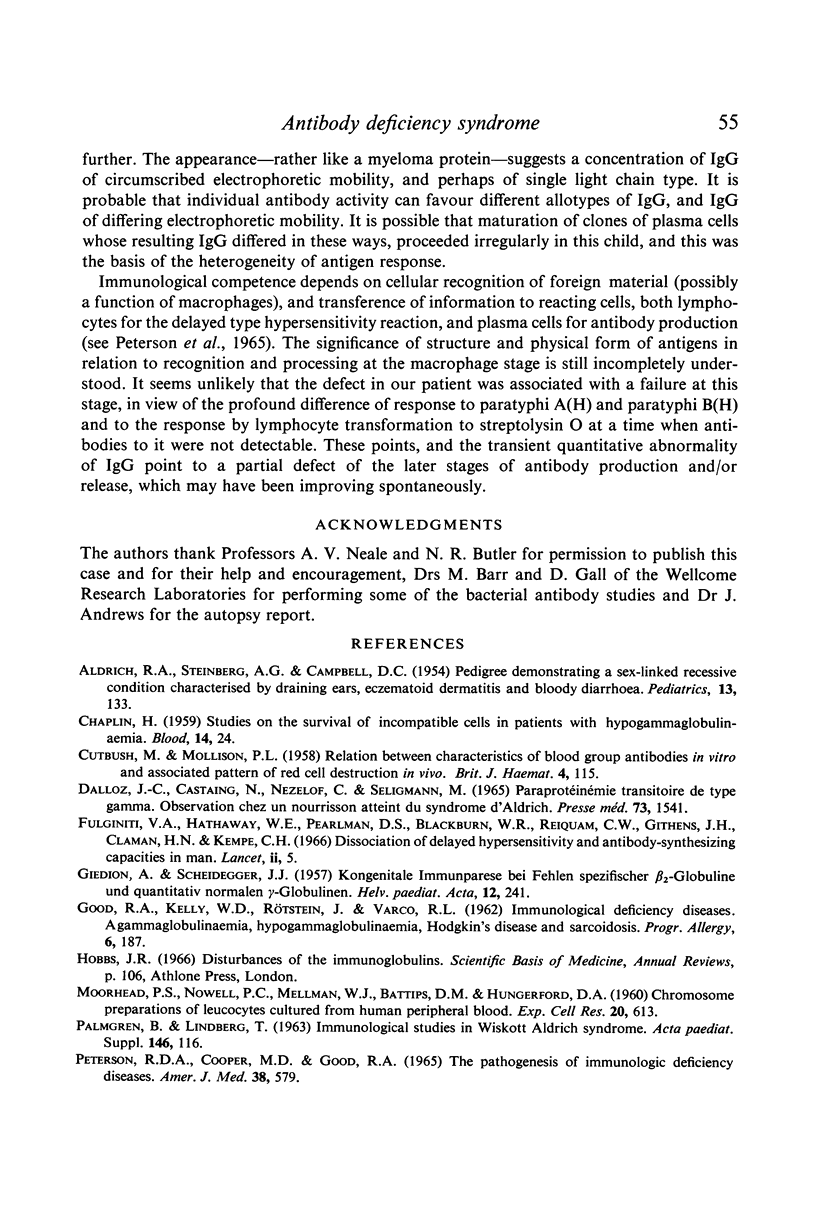

Images in this article
Selected References
These references are in PubMed. This may not be the complete list of references from this article.
- ALDRICH R. A., STEINBERG A. G., CAMPBELL D. C. Pedigree demonstrating a sex-linked recessive condition characterized by draining ears, eczematoid dermatitis and bloody diarrhea. Pediatrics. 1954 Feb;13(2):133–139. [PubMed] [Google Scholar]
- CHAPLIN H., Jr Studies on the survival of incompatible cells in patients with hypogammaglobulinemia. Blood. 1959 Jan;14(1):24–36. [PubMed] [Google Scholar]
- CUTBUSH M., MOLLISON P. L. Relation between characteristics of blood-group antibodies in vitro and associated patterns of redcell destruction in vivo. Br J Haematol. 1958 Apr;4(2):115–137. doi: 10.1111/j.1365-2141.1958.tb03843.x. [DOI] [PubMed] [Google Scholar]
- DALLOZ J. C., CASTAING N., NEZELOF C., SELIGMANN M. PARAPROT'EIN'EMIE TRANSITOIRE DE TYPE GAMMA. OBSERVATION CHEZ UN NOURRISSON ATTEINT DU SYNDROME D'ALDRICH. Presse Med. 1965 May 26;73:1541–1546. [PubMed] [Google Scholar]
- Fulginiti V. A., Hathaway W. E., Pearlman D. S., Blackburn W. R., Reiquam C. W., Githens J. H., Claman H. N., Kempe C. H. Dissociation of delayed-hypersensitivy and antibody-synthesising capacities in man. Report of two sibships with thymic dysplasia, lymphoid tissue depletion, and normal immunoglobulins. Lancet. 1966 Jul 2;2(7453):5–8. doi: 10.1016/s0140-6736(66)91742-9. [DOI] [PubMed] [Google Scholar]
- GIEDION A., SCHEIDEGGER J. J. Kongenitale Immunparese bei Fehlen spezifischer beta 2-Globuline und quantitativ normalen gamma-Globulinen. Helv Paediatr Acta. 1957 Aug;12(3):241–259. [PubMed] [Google Scholar]
- GOOD R. A., KELLY W. D., ROTSTEIN J., VARCO R. L. Immunological deficiency diseases. Agammaglobulinemia, hypogammaglobulinemia, Hodgkin's disease and sarcoidosis. Prog Allergy. 1962;6:187–319. [PubMed] [Google Scholar]
- MOORHEAD P. S., NOWELL P. C., MELLMAN W. J., BATTIPS D. M., HUNGERFORD D. A. Chromosome preparations of leukocytes cultured from human peripheral blood. Exp Cell Res. 1960 Sep;20:613–616. doi: 10.1016/0014-4827(60)90138-5. [DOI] [PubMed] [Google Scholar]
- PETERSON R. D., COOPER M. D., GOOD R. A. THE PATHOGENESIS OF IMMUNOLOGIC DEFICIENCY DISEASES. Am J Med. 1965 Apr;38:579–604. doi: 10.1016/0002-9343(65)90135-x. [DOI] [PubMed] [Google Scholar]
- UHR J. W., DANCIS J., NEUMANN C. G. Delayed-type hypersensitivity in premature neonatal humans. Nature. 1960 Sep 24;187:1130–1131. doi: 10.1038/1871130a0. [DOI] [PubMed] [Google Scholar]
- WEST C. D., HONG R., HOLLAND N. H. Immunoglobulin levels from the newborn period to adulthood and in immunoglobulin deficiency states. J Clin Invest. 1962 Nov;41:2054–2064. doi: 10.1172/JCI104663. [DOI] [PMC free article] [PubMed] [Google Scholar]



